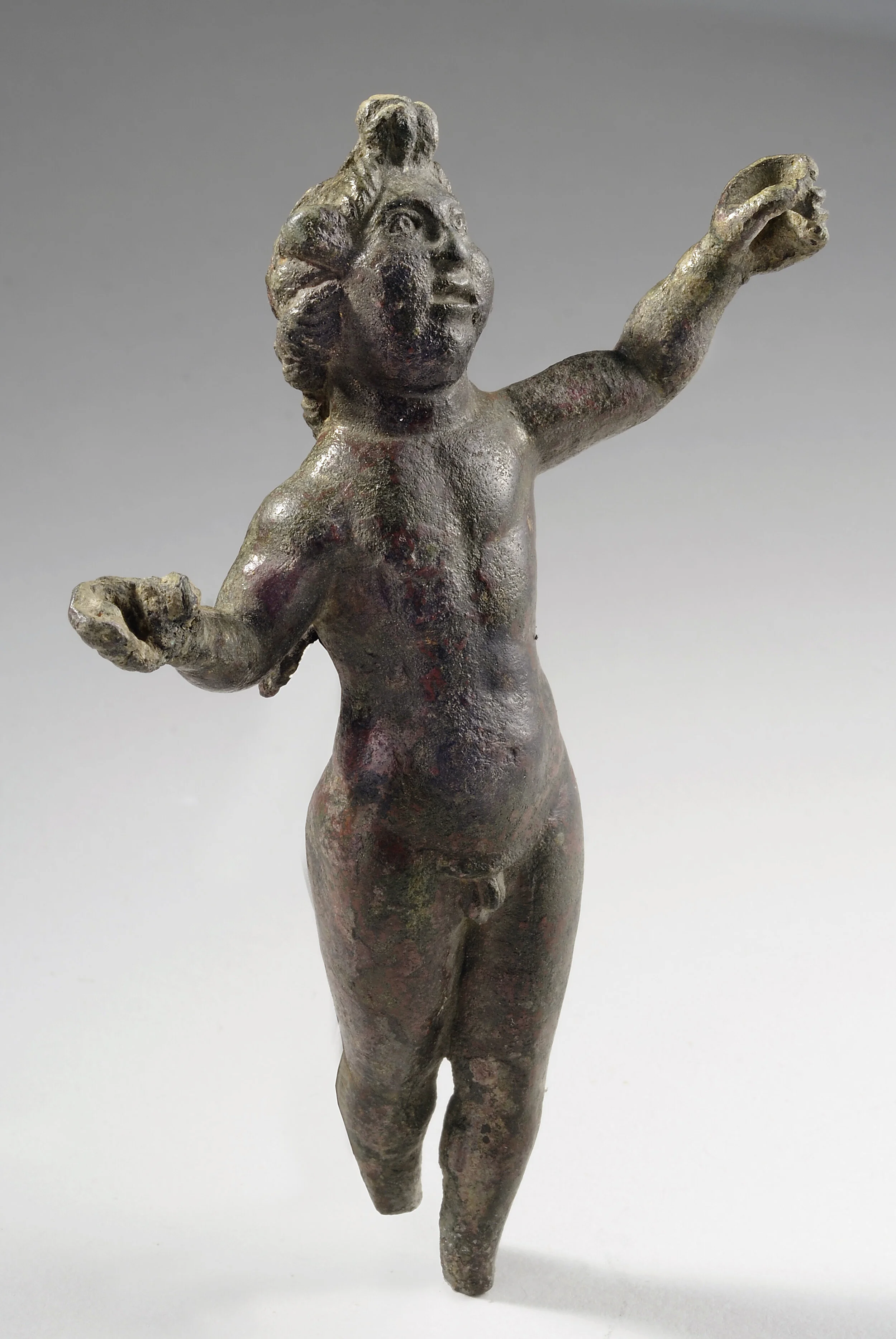Ancient Roman Bronze She - Panther



Ancient Roman Bronze She - Panther
ATTACKING PANTHER
Roman, 1st century A.D.
Bronze
L: 8.4 cm (3.3 in)
Serial: 1283
Provenance: Private collection, acquired in the late 1970s - early 1980s
Although fragmentary (missing lower parts of the hind legs), this small figure of a panther is a remarkable work of Roman animal art. An ochre and red colored patina covering most of the areas of the surface also reveals large patches of the original metal of an extremely beautiful deep green color. The combination of colors supplies the piece with an additional decorative effect. It is executed in the solid cast method with the help of the lost wax model technique. Modeling is combined with the engraving of smaller shapes and details: eyes, nostrils, teeth, the long hair of the whiskers as well as the ribs are all neatly depicted. The rounded groups of muscles illustrate the well-built body of a young animal that is undoubtedly a she-panther as the row of nipples is clearly modeled on the bottom of her long belly.
Most striking is the pose and the rendering of the action of the hunt. Apparently the beast is shown while attacking the unseen pray. The viewer’s eye follows the sequence of the composition and recognizes that there is both the aggressive roar (from the wide-open mouth) and the preparation for the leap. Great tension of the muscles can be seen in all parts of the body: especially in the small round erect ears, the legs placed in opposition, long tail energetically curved around the thigh while the forepaws with spread claws are already prepared to catch and to tear into the victim. It is known that large marble or bronze statues of a she-panther were made as tomb sculpture in antiquity; the belief was that the fierce animal would guard the grave. This was most certainly based on the observation of how aggressively this animal defends her cubs.
Additional observation reveals a small round hole on the belly of the animal which contains the remainder of a pin that was intended for attachment to a base not here preserved. As many bronze statuettes survived without their bases, we can conclude that in antiquity the buyer might choose between a cheap wooden and a more expensive stone or bronze pedestals as well as selecting a specific shape and size. In Greek and Roman art a panther is represented accompanying Bacchus and his followers in their processions; a figurine of the animal might be brought to the sanctuary and installed there as an offering for the deity. The Romans were known to keep small shrines, lararia, for private worshiping in their homes. The range of the statuettes was determined by the choice of family divine protectors. The figures of animals associated with these protectors could be also appropriate for such small sculpture arrangements in the home. Statuettes of Bacchus (or a satyr) and a she-panther might share the same base as it is known from the marble statues. The realistic rendering and the expressiveness of the composition make this representation of a she-panther both attractive and impressive.







